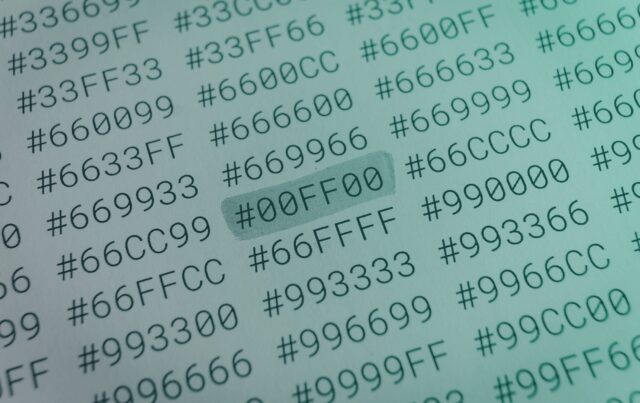Introduction to the Binary–Decimal–Hex Converter
Working with different number systems is an essential skill in computer science, electronics, and programming. While humans typically use the decimal system (base 10) in everyday life, computers rely on binary (base 2), and many engineers prefer hexadecimal (base 16) for a more compact representation of data. Switching between these number systems can be confusing, especially when dealing with large numbers or negative values.
This online Binary–Decimal–Hex Converter is designed to make the process simple and intuitive. Just enter a number in any one of the fields, and the calculator will instantly convert it into the other two formats. It supports negative values, large integers (using modern browser BigInt support), and even includes an option to group binary digits into 4-bit nibbles for better readability.
Whether you are a student learning about digital systems, a programmer debugging low-level code, or an electronics enthusiast working with microcontrollers, this tool will save you time and reduce errors.
Understanding number systems: binary, decimal, and hexadecimal conversion explained
When working with computers, electronics, or digital systems, one of the most important concepts to master is number system conversion. Humans are used to the decimal system (base 10), but computers process information using the binary system (base 2). For convenience, engineers and programmers also rely heavily on the hexadecimal system (base 16) because it provides a compact way of representing binary data.
This article will walk you through the basics of each number system, why they matter, and how to convert between them. By the end, you will understand why tools like our Binary–Decimal–Hex Converter are essential in both education and professional practice.
What is the decimal system?
The decimal system is the standard numbering system humans use in everyday life. It is base 10, which means it uses ten digits:0, 1, 2, 3, 4, 5, 6, 7, 8, 9
Each digit’s position represents a power of 10:
-
The number
345means:-
(3 × 10²) + (4 × 10¹) + (5 × 10⁰)
-
This system is intuitive for humans but not efficient for digital circuits, which are based on electrical states (on/off).
What is the binary system?
The binary system is base 2, which means it only uses two digits:0 and 1
Every binary digit (called a bit) represents a power of 2:
-
The number
1011in binary means:-
(1 × 2³) + (0 × 2²) + (1 × 2¹) + (1 × 2⁰)
-
= 8 + 0 + 2 + 1 = 11 in decimal
-
Computers use binary internally because digital electronics can easily represent two states:
-
0 → OFF / low voltage
-
1 → ON / high voltage
What is the hexadecimal system?
The hexadecimal system is base 16. It uses sixteen digits:0, 1, 2, 3, 4, 5, 6, 7, 8, 9, A, B, C, D, E, F
Here, the letters represent values from 10 to 15. For example:
-
A = 10 -
B = 11 -
F = 15
Each digit’s position represents a power of 16. For example, the hexadecimal number 2F means:
-
(2 × 16¹) + (15 × 16⁰)
-
= 32 + 15 = 47 in decimal
Why use hexadecimal?
While computers run on binary, binary strings quickly become too long for humans to read. For example:
-
Binary:
11111111 -
Decimal:
255 -
Hexadecimal:
FF
You can see that hexadecimal is much shorter and more practical when representing large binary values.
This is why programmers often use hex in:
-
Memory addresses (e.g.,
0x7FFF) -
Machine code and assembly language
-
Color codes in web design (e.g.,
#FF0000for red)
How to convert between binary, decimal, and hexadecimal
Binary ↔ decimal
To convert from binary to decimal:
-
Multiply each binary digit by its power of 2 and sum the results.
To convert from decimal to binary:
-
Repeatedly divide the decimal number by 2 and write down the remainders.
Example: Decimal 25 → Binary
-
25 ÷ 2 = 12 remainder 1
-
12 ÷ 2 = 6 remainder 0
-
6 ÷ 2 = 3 remainder 0
-
3 ÷ 2 = 1 remainder 1
-
1 ÷ 2 = 0 remainder 1
Result (bottom-up):11001
Decimal ↔ hexadecimal
To convert from decimal to hex:
-
Divide the decimal number by 16, write down the remainder (as a hex digit), and continue until the result is 0.
Example: Decimal 47 → Hex
-
47 ÷ 16 = 2 remainder 15 →
F -
Result:
2F
To convert from hex to decimal:
-
Multiply each digit by its power of 16 and sum.
Binary ↔ hexadecimal
This is the easiest conversion because 1 hex digit = 4 binary digits.
-
1010(binary) =A(hex) -
1111(binary) =F(hex)
Example:
Binary 11010111 → Hex
-
Group into 4 bits:
1101 0111 -
1101 = D,0111 = 7 -
Result:
D7
Applications of number system conversion
Number system conversion is essential in many fields:
-
Computer science – understanding how processors handle data
-
Networking – working with IP addresses and subnets
-
Programming – debugging machine code, color codes, bitwise operations
-
Electronics – microcontroller programming, logic circuit design
-
Education – teaching students the foundation of digital systems
Why use an online converter?
Manual conversion is educational but time-consuming. With large numbers, it’s easy to make mistakes. That’s why an online Binary–Decimal–Hex Converter is helpful:
-
Converts instantly
-
Handles negative numbers
-
Works with very large integers (BigInt support)
-
Offers 4-bit binary grouping for readability
Such tools are perfect for students, teachers, engineers, and anyone working with digital systems.
Understanding the differences between binary, decimal, and hexadecimal is a fundamental step in mastering computer science, electronics, and programming. Each system has its purpose:
-
Decimal for everyday human use
-
Binary for computers and digital circuits
-
Hexadecimal for compact, human-friendly representation of binary
With a solid grasp of number system conversion — and the help of our Binary–Decimal–Hex Converter — you can work more efficiently, avoid mistakes, and gain deeper insight into how digital systems truly operate.
Frequently asked questions about number system conversion
What is the difference between binary, decimal, and hexadecimal?
-
Binary (base 2) uses only
0and1. -
Decimal (base 10) uses digits
0–9, which humans use daily. -
Hexadecimal (base 16) uses digits
0–9and lettersA–Ffor compact representation of binary.
Why do computers use binary?
Computers use binary because digital circuits have two reliable states: on/off or high/low voltage. This makes binary the simplest and most efficient way to represent data electronically.
Why do programmers use hexadecimal instead of binary?
Hexadecimal is much shorter and easier to read than binary. Since 1 hex digit equals 4 binary digits, it is commonly used in programming, memory addresses, debugging, and color codes.
How do you convert decimal to binary manually?
To convert decimal to binary, repeatedly divide the number by 2 and note the remainders. Reading the remainders from bottom to top gives the binary number.
How do you convert binary to hexadecimal quickly?
Group the binary number into sets of 4 bits from right to left, then replace each group with its hex equivalent. Example: 1101 0111 = D7.
What is a nibble in binary?
A nibble is a group of 4 binary digits (bits). It is half a byte (8 bits). In hexadecimal, 1 digit equals exactly 1 nibble.
Can the converter handle negative numbers?
Yes. Our online Binary–Decimal–Hex Converter supports both positive and negative integers, as well as very large numbers thanks to modern browser BigInt support.
Where are number system conversions used in real life?
They are widely used in:
-
Computer science and programming
-
Network engineering (IP addresses, subnets)
-
Web design (hex color codes)
-
Electronics (logic circuits, microcontrollers)
-
Education and digital logic courses
Image(s) used in this article are either AI-generated or sourced from royalty-free platforms like Pixabay or Pexels.
Did you enjoy this article? Buy me a coffee!





